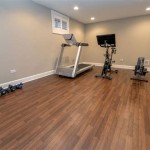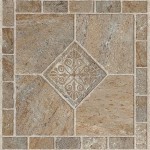Living Room and Kitchen Open Floor Plan: A Comprehensive Guide
The open floor plan, particularly the combination of living room and kitchen, has become a dominant trend in modern home design. This architectural approach eliminates or minimizes the barriers between these two central spaces, creating a large, unified area that promotes sociability, enhances natural light, and offers a sense of spaciousness. However, successfully implementing an open living room and kitchen design requires careful consideration of several factors, ranging from zoning and functionality to aesthetics and potential drawbacks.
Historically, homes featured distinct rooms, each serving a specific purpose. The kitchen was often relegated to the back of the house, a purely functional space separate from the social areas. The living room, conversely, was a formal space reserved for entertaining guests. The shift towards open floor plans reflects a change in lifestyle, prioritizing casual interaction, shared experiences, and a less formal approach to living.
Open floor plans are particularly appealing to families with young children, as they allow parents to supervise activities in the living room while preparing meals in the kitchen. They are also ideal for individuals who enjoy entertaining, as the open space facilitates conversation and movement between cooking, dining, and socializing areas.
Key Point 1: Zoning and Defining Spaces in an Open Floor Plan
While the primary characteristic of an open floor plan is the absence of walls, it is crucial to define zones within the space to maintain functionality and visual appeal. Without clear delineation, the open area can feel chaotic and undefined. Several methods can be employed to create distinct zones without compromising the open concept.
Furniture Arrangement: The strategic placement of furniture is a fundamental technique for defining zones. For example, a large sectional sofa can visually separate the living room area from the kitchen. An area rug can further delineate the living room, creating a sense of enclosure and warmth. Similarly, a kitchen island or peninsula can serve as a natural barrier between the cooking area and the adjacent living space. The alignment and orientation of furniture should be carefully considered to guide traffic flow and create distinct areas for different activities.
Changes in Flooring: Varying the flooring materials can effectively delineate different zones. For instance, hardwood flooring can be used in the living room to create a warm and inviting atmosphere, while tile or engineered wood can be used in the kitchen for its durability and water resistance. The transition between the two flooring types visually signals a change in function and helps to separate the spaces. The color and pattern of the flooring can also contribute to the overall aesthetic and help to define the character of each zone.
Lighting: Lighting plays a crucial role in defining zones and creating ambiance. Layered lighting schemes that incorporate ambient, task, and accent lighting can effectively differentiate the living room and kitchen areas. In the kitchen, task lighting, such as under-cabinet lighting and pendant lights over the island, can provide ample illumination for food preparation. In the living room, ambient lighting, such as recessed lighting or a chandelier, can create a warm and inviting atmosphere. Accent lighting, such as spotlights or wall sconces, can highlight architectural features or artwork and add visual interest.
Architectural Elements: Subtle architectural elements can also be used to define zones without completely closing off the space. A partial wall, a decorative screen, or a change in ceiling height can create a visual separation while maintaining the open feel. Columns or arches can also be used to delineate zones and add architectural interest. The scale and style of these architectural elements should be carefully considered to ensure they complement the overall design and do not overwhelm the space.
Color and Texture: Using different color palettes or textures in each zone can also help to define the space. For instance, a warm, neutral color scheme can be used in the living room to create a relaxing atmosphere, while a brighter, more vibrant color scheme can be used in the kitchen to create a sense of energy and activity. Textural elements, such as different types of fabrics, rugs, or wall coverings, can also be used to add visual interest and define the character of each zone.
Key Point 2: Functionality and Workflow in an Open Living Room and Kitchen
An open living room and kitchen must be designed with functionality and workflow in mind. The layout should facilitate efficient movement and accommodate the needs of the occupants. This involves careful consideration of the placement of appliances, work surfaces, storage, and seating areas.
The Kitchen Work Triangle: The traditional kitchen work triangle, which connects the sink, refrigerator, and stove, remains a relevant concept in open floor plan design. The placement of these three elements should be carefully considered to minimize walking distance and maximize efficiency. The dimensions of the triangle should be appropriate for the size of the kitchen and the number of people who will be using it.
Island or Peninsula Design: A kitchen island or peninsula can significantly enhance the functionality of an open kitchen. It can provide additional counter space for food preparation, a breakfast bar for casual dining, and storage for kitchenware and appliances. The island can also serve as a focal point in the kitchen and a gathering place for family and friends. The design of the island should be carefully considered to ensure it is functional, aesthetically pleasing, and integrates seamlessly with the rest of the kitchen.
Storage Solutions: Adequate storage is essential in an open kitchen to prevent clutter and maintain a clean and organized appearance. This includes a combination of base cabinets, wall cabinets, pantry storage, and specialized storage solutions such as pull-out shelves, drawer organizers, and spice racks. The placement of storage should be carefully considered to ensure it is easily accessible and conveniently located near the areas where it is needed. Vertical storage solutions, such as tall cabinets or shelving, can be particularly effective in maximizing space in a small kitchen.
Appliance Placement: The placement of appliances, such as the refrigerator, dishwasher, and microwave, should be carefully considered to optimize workflow and prevent congestion. The refrigerator should be located near the entrance to the kitchen for easy access. The dishwasher should be located near the sink for convenient loading and unloading. The microwave should be located at a comfortable height and within easy reach. Appliances should be integrated into the overall design to create a cohesive and visually appealing aesthetic.
Traffic Flow: The open floor plan should be designed to facilitate easy movement between the kitchen, living room, and other areas of the house. The pathways should be wide enough to accommodate multiple people walking at the same time. Furniture should be arranged to avoid obstructing traffic flow. The layout should be intuitive and easy to navigate, allowing occupants to move freely and comfortably throughout the space.
Key Point 3: Aesthetics and Harmony in Open Concept Spaces
The aesthetic cohesion between the living room and kitchen is essential for a successful open floor plan. The design should create a unified and harmonious space that reflects the homeowner's personal style and preferences. This involves careful consideration of color palettes, materials, textures, and furniture styles.
Color Palette Coordination: The colors used in the living room and kitchen should complement each other to create a sense of visual harmony. A cohesive color palette can be achieved by using similar colors in different shades or by using complementary colors that create a balanced and visually appealing contrast. Neutral colors, such as white, gray, and beige, can be used as a base color and accented with pops of color in furniture, accessories, or artwork. The use of color should be carefully considered to create the desired mood and atmosphere.
Material Selection: The materials used in the living room and kitchen should also complement each other. For instance, if the living room features hardwood flooring, the kitchen could incorporate wood accents in the cabinets or island. Similarly, if the living room features a stone fireplace, the kitchen could incorporate stone accents in the backsplash or countertops. The materials should be durable, easy to maintain, and appropriate for the specific function of each zone. The combination of materials should create a sense of visual interest and tactile appeal.
Furniture Style: The furniture styles used in the living room and kitchen should be compatible to create a cohesive and unified aesthetic. The furniture should be scaled appropriately for the size of the space and arranged to create a comfortable and functional layout. The style of the furniture should reflect the homeowner's personal preferences and the overall design aesthetic. Mixing and matching different styles can be effective if done carefully and with a clear sense of purpose.
Lighting Fixtures: The lighting fixtures used in the living room and kitchen should complement each other and contribute to the overall aesthetic. The style, size, and finish of the lighting fixtures should be carefully considered to ensure they are appropriate for the space and the desired ambiance. Layered lighting schemes can be used to create visual interest and highlight architectural features. The lighting fixtures should be functional, energy-efficient, and aesthetically pleasing.
Accessories and Décor: Accessories and décor play a crucial role in tying the living room and kitchen together and creating a personalized space. Artwork, rugs, pillows, and other decorative items can be used to add color, texture, and visual interest. The accessories should be carefully selected to complement the overall design and reflect the homeowner's personal style. Too many accessories can create a cluttered and overwhelming look, so it is important to edit carefully and choose items that are meaningful and visually appealing.
Open floor plans, while offering undeniable benefits, also present certain challenges. Noise control can be a significant issue, as sounds from the kitchen can easily travel to the living room and vice versa. Adequate ventilation is essential to prevent cooking odors from permeating the entire space. Maintaining cleanliness and organization is also crucial, as clutter in one area can easily impact the overall aesthetic of the open space. Thoughtful planning and design are essential to mitigate these challenges and create a functional, beautiful, and enjoyable open living room and kitchen.

Pros And Cons Of Open Concept Floor Plans Hgtv

50 Open Concept Kitchen Living Room And Dining Floor Plan Ideas 2024 Ed

15 Open Concept Kitchens And Living Spaces With Flow Hgtv

Decor Ideas For An Open Floor Plan Living Room And Kitchen

Discover The Spacious Appeal Of Open Concept Floor Plans Houseplans Blog Com

The Open Plan Kitchen Is It Right For You Fine Homebuilding

Which Is Better Open Or Closed Floor Plan By Maria Killam

Making The Most Of Your Open Concept Space Brock Built

Pin Page

30 Open Concept Kitchens Pictures Of Designs Layouts








